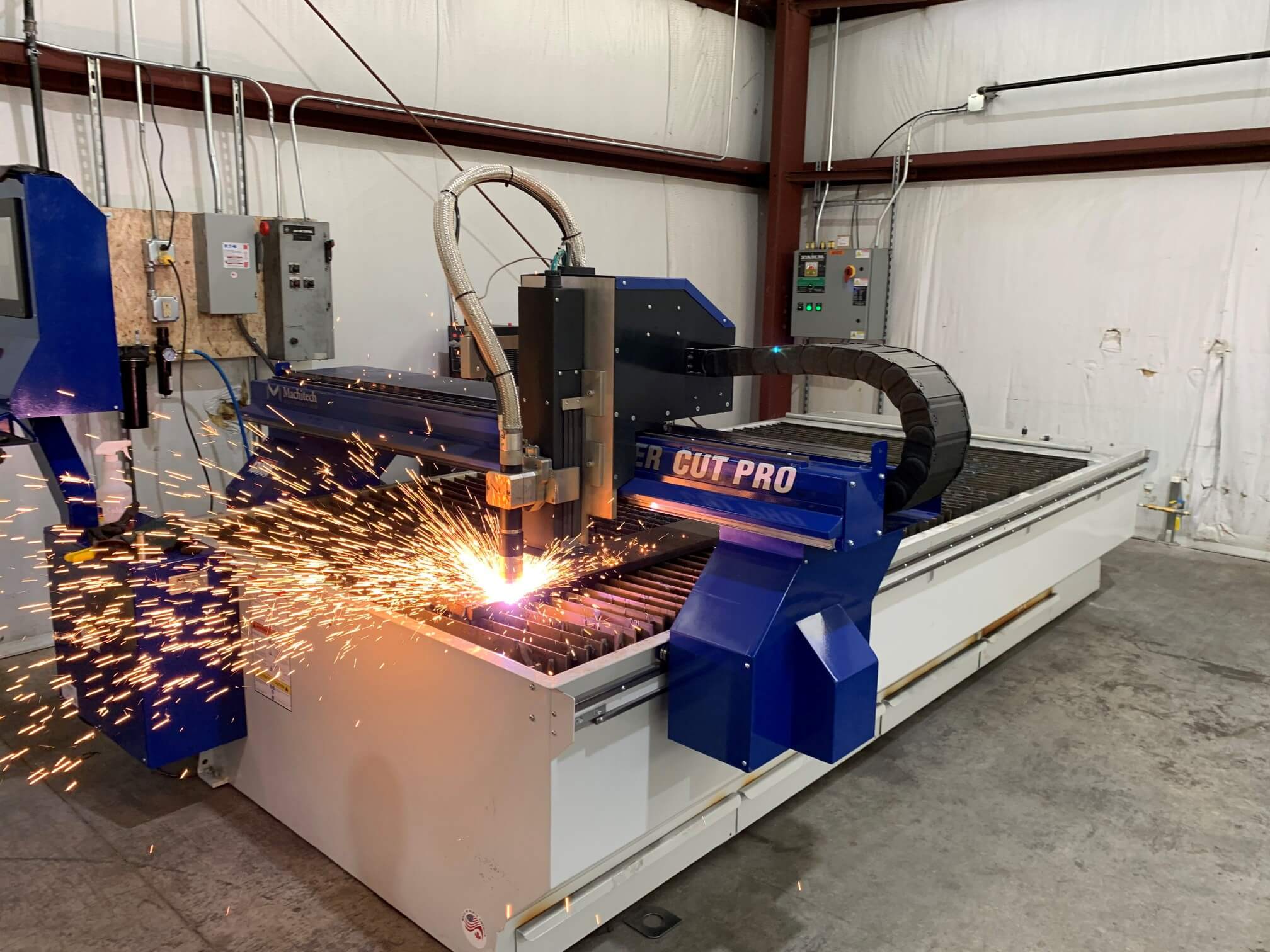When it comes to metal fabrication, there are a lot of fabrication methods form which to choose. What type of metal you are fabricating and what your intended product is will heavily influence what method you choose. Whether you opt for laser, plasma or water jet, they are all good methods with different ways of achieving a finished product.
First, CNC plasma tables use a plasma torch to cut metal. Plasma torches achieve this by utilizing the electrically conductive gas to transfer energy from the power source through the torch to the material being cut. ESAB provides a helpful description that explains just how a plasma torch cuts metal, “Take that stream of electricity flowing through a gas, and constrict it through a small orifice. Now that stream is really dense and moving very fast. The resulting stream can melt and blow through most metals quite easily. That’s a plasma torch. Plasma cutting torches usually use a copper nozzle to constrict the gas stream with the arc flowing through it. That arc jumps from an electrode in the torch to something else – usually the conductive material being cut.”
Next, CNC laser cutting tables use a laser beam to cut through metal. Laser cutting uses a focused laser beam to melt material away in the location where a cut needs to be made and tends to be very accurate. So in essence, laser cutting tends to be more “melting” than cutting, in reality. ESAB again offers a helpful description of laser cutting, “The laser beam is a column of very high-intensity light, of a single wavelength, or color. In the case of a typical CO2 laser, that wavelength is in the Infra-Red part of the light spectrum, so it is invisible to the human eye. The beam is only about 3/4 of an inch in diameter as it travels from the laser resonator, which creates the beam, through the machine’s beam path. It may be bounced in different directions by a number of mirrors, or “beam benders”, before it is finally focused onto the plate. The focused laser beam goes through the bore of a nozzle right before it hits the plate. Also flowing through that nozzle bore is a compressed gas, such as Oxygen or Nitrogen…The high power density results in rapid heating, melting and partial or complete vaporizing of the material.”
While the first two methods are somewhat similar, water jet cutting is altogether different. Water jet cutting uses water mixed with small abrasives that are propelled through a nozzle to erode the area being cut. Because of the fact that it does not use heat, water jet cutting can be used to cut virtually any material, including metal. ESAB offers one final helpful description of water jet cutting, “Unlike a thermal cutting process, like plasma, oxy-fuel, or laser, the waterjet process is a mechanical sawing process. You can almost think of it like a band-saw, which is a thin strip of metal with sharp teeth which are pulled through the material that you are cutting. Similarly, the waterjet cutting process uses a thin stream of water with sharp pieces of rock which are pushed through the material…Typical waterjet cutting pressure is between 50,000 and 60,000 PSI. Many newer systems are pressurized up to 90,000 PSI. The water at this pressure is then released through a small orifice machined into a diamond or sapphire, usually in the range of 5 to 15 thousandths of an inch diameter. The resulting stream of water is supersonic, which means it is going faster than the speed of sound.”
 English
English  Français
Français 
